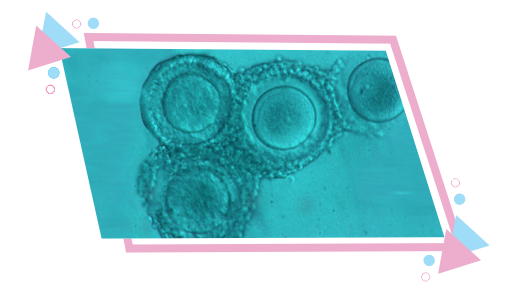IVM (Invitromaturation)
Services / IVM (Invitromaturation)

In vitro maturation (IVM) occurs when a woman’s eggs are collected and matured outside the body. This is done as part of an IVF procedure.
A woman’s eggs (also called oocytes) are formed before her birth. These ovules remain at rest in their ovaries until puberty, when normal hormonal changes mature an egg (mature) and are released every month.
When a woman undergoes in vitro fertilization, she usually takes medication to mature more than 1 egg at the same time. These eggs are collected before being released from the ovary and then stimulated with sperm in the laboratory with the hope of fertilization. In some cases, some or all of the eggs collected (eggs) are not ripe and are ready to be fertilized. In recent years, these eggs could not be used for in vitro fertilization. Scientific advances have allowed embryologists to take these immature eggs and sometimes “mature” them in vitro (in the laboratory). This is called the IVM. The eggs can be frozen for later use (such as immature eggs, mature eggs or embryos after they have been combined with sperm and fertilized). Or they can be matured, fertilized and inserted into the uterus of a woman in the hope of pregnancy.
Should women undergoing IVM take injectable medications to induce ovulation?
In the most severe type of IVM, no medications are administered to stimulate the growth of additional eggs. Immature ovules are taken from unstimulated ovaries. However, in a modified IVM cycle, low-dose injectable medications may be administered.
What is the purpose of using medications to stimulate the ovary for IVM?
In recent clinical studies, low dose ovarian stimulation for the removal of immature ovules can produce more eggs and improve the lining of the uterus to receive the embryo.
Why use IVM?
To prevent ovarian hyperstimulation syndrome (OHSS), IVM can be considered in women with polycystic ovary syndrome (PCOS) or ovaries similar to PCO. These women are at higher risk of OHSS. OHSS is an exaggerated response to drugs used to induce ovulation, especially after the use of injectable gonadotropin agents when hCG is used for final follicular maturation (for more information on OHSS, see the ASRM patient card entitled Syndrome of ovarian hyperstimulation [OHSS]). However, the use of different drugs for the final follicular maturation called leuprolide (GnRH agonist) instead of hCG considerably reduces this risk and can be used as an alternative to IVM.
In patients with cancer
IVM may also be appropriate in women who can not wait for the time necessary to obtain fully mature eggs before cancer treatment begins. In women with tumors sensitive to estrogen, IVM prevents the additional production of estrogen observed with conventional ovarian stimulation. The recovery of immature eggs for later use is one way in which these women can preserve their ability to have a child later on.
Is there any benefit to IVM?
IVM requires less medication than conventional IVF and reduces the immediate cost of treatment; however, pregnancy rates are also lower, so it is not clear whether the IVM is cheaper. Even an IVM cycle takes less time.
Is IVM available today?
At present, this treatment is still considered experimental and is not recommended as a substitute for conventional IVF. However, in some situations, particularly when conventional IVF is not possible, IVM is an alternative treatment. It is increasingly available, although pregnancy rates are lower in most cases. There may be some groups of women who have the same success rates.